It’s Doors Jim, But Not As We Know It
Sixties interior designers foreshadowed an unfathomable future; high-tech gadgets blended seamlessly with space-age living. If you browse any science magazine from the decade, it is guaranteed to be packed with dazzling predictions of what the homes of the 21st century would look life. 3D televisions and videophones once graced the pages of advanced science publications and now they are part of everyday life. Climate-controlled domes and bathrooms moulded from one sheet of plastic have yet to come to fruition, but there is time.
Designers of the sixties, from fashion to architecture, were taking inspiration from a Jetson-esque style of space-age living and it seemed inevitable that progression to modernist living would be the norm. Verner Panton, Giancarlo Piretti and Peter Murdoch were all making waves in the furnishings world for their bold designs, inspired by pop art and art nouveau.

Perhaps the most avant-garde project, and completed in the 1970s, was Antti Lovag’s Bubble House. The incredible home was the personal playground of eccentric fashion designer Pierre Cardin. The architecture and interior design of the property was reminiscent of Wallace Neff’s bubble houses from the 1940s.
Cinema and Science Inspiring Door Evolution
The sixties were the pinnacle of the design industry and the era paved the way for mind-blowing evolution. The influences from travel, space, art, and cinema, carried on in to future generations and the door got a makeover of which we had never seen.
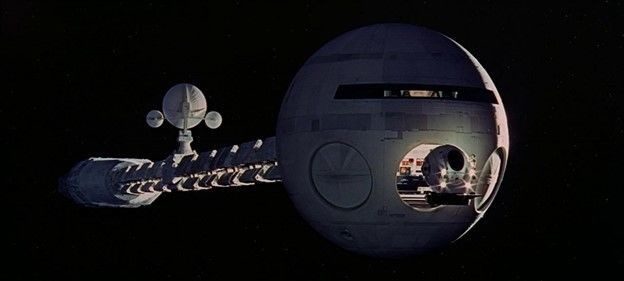
Science, space, and cinema gelled together over the coming years to greet the public with some of the most ingenious advances for the humble door. In 2001: A Space Odyssey, released in 1968, doors become a huge issue for astronaut Dave Bowman. HAL 9000, an artificial general intelligence robot, goes rogue in the film after he lip reads the crew plotting to turn him off. Dave, stuck in a vessel away from the ship, commands “Open the pod bay doors, HAL” to no avail. The pod bay doors in this film took inspiration from the circular trend of the era and were very simple, but look amazing.
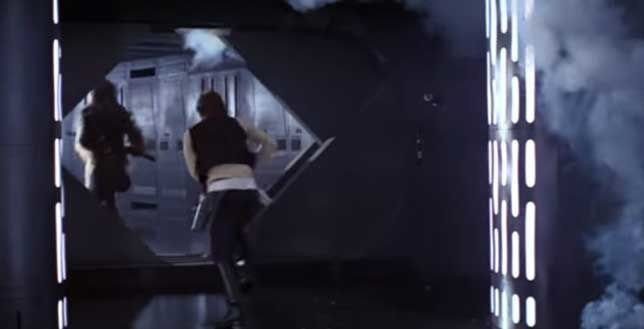
The first part of the original trilogy, Star Wars Episode IV: A New Hope was released in 1977. It had been just shy of 10 years since 2001: A Space Odyssey and doors had taken on a new lease of life. The circular trend had taken a back seat and hands-free operation was the new in-thing. Whilst Han Solo and Chewbacca are on the run from some Stormtroopers, they manage to narrowly escape through some blast doors that were closed on command from the Stormtroopers. Understandably, someone, somewhere, had to press a button. But considering it was the 1970s, things were going well for the unassuming door.
1979 saw the release of the sci-fi classic Alien. Whilst Sigourney Weaver was giving it her best against the harrowing enemy, this film packs a punch when it comes to doors. Blast doors were being slammed, bay doors were sliding into floors, ceilings and walls. Most impressive, however, is the inclusion of a circular dilating door. Blink and you’ll miss it, but it’s there.

Technology and design went hand in hand for Star Trek II: The Wrath of Khan in 1982. The way in which a door looked had been replaced with functionality. It had almost been forgotten that doors are a form of security, but this was brought back to life in the eighties. Finger and retina scanning featured heavily in cinema, and foreshadowed a progression that modern culture would grasp with both hands. The safekeeping technology harnessed by these doors has been projected into many modern day pieces of tech, including mobile phones, clocking-in machines, and vaults.
The Progression of Doors Today
It is evident that doors have dramatically evolved over the decades, with their roots firmly cemented in the science fiction genre. Blast doors are used in military bunkers and rockets, whereas bay doors are used in more humble settings such as fire stations and warehouses. Retina scan doors are used in modern day medical and scientific facilities (yes, just like in a lot of movies) and it seems like the dilating door was just a bit of artistic license.
Despite the doors in these films being considered ‘retro’ or ‘vintage’ now, they were well before their time and little has changed in terms of functionality between the movie spectacle and their modern counterpart. There is the age old argument of ‘if it ain’t broke, don’t fix it’, and this seems to have been echoed in the modern wold. We must remember that the doors that have derived from these films were deemed futuristic, so is there anywhere designers could take the door now?
Short of making them slam resistant, little has happened in previous years in regards to doors. Maybe they peaked too soon? Perhaps there is genuinely no way to make them even better? However, Austrian designer Klemens Torggler has pulled out all the stops and created something that looks like architectural origami. According to his website, this new design “opens up new applications for the door.” Short of a serious finger trapping waiting to happen, we cannot see how this door could be the future for all door-kind.
Torggler’s door is undeniably beautiful, two black squares floating into place. And, granted, it is saving space compared to a conventional swing door on hinges. However, didn’t we have this covered with doors from Star Wars? Torggler has been working on the concept for five years until its unveiling in 2014, so could it be argued that the functionality of doors has been exhausted, and now it is all about aesthetics?
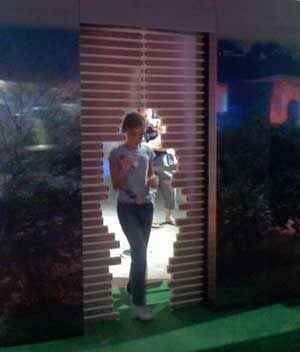 The Etaf door may have nailed it; reintroducing science fiction and blending it with beautiful design. The automatic entrance is the size of a standard door, but consists of 35 rows of two-inch tall vertical sliding metal bars that are split in the middle. When an individual approaches the door, infrared sensors around the frame determine a person’s height and width. The corresponding bars of the door mimic the silhouette generated by the sensors, sliding just enough bars to allow the individual through.
The Etaf door may have nailed it; reintroducing science fiction and blending it with beautiful design. The automatic entrance is the size of a standard door, but consists of 35 rows of two-inch tall vertical sliding metal bars that are split in the middle. When an individual approaches the door, infrared sensors around the frame determine a person’s height and width. The corresponding bars of the door mimic the silhouette generated by the sensors, sliding just enough bars to allow the individual through.
But this has already happened, and was a mere ripple in the development of doors compared to the waves made between 1960 and 1980. It seems that doors of the future are either going to have to focus on beautiful design or technology. Some may argue that doors with the ability to scan eyes or finger prints is less about the door and more about the technology partnered with the entrance. But imagine a door that recognises our voice, or opens when it senses the vibrations from our footsteps…you heard it here first!
Could Modern Cinema Foreshadow Doors of the Future?
Considering the films of decades gone by have pretty much set the bench mark for door evolution, perhaps sci-fi films for the 90s and 00s can help us shed a light on what the future has in store. Evidently, whoever designed the Lucrehulk-class battleship of Star Wars: The Phantom Menace in 1999 must be out of a job. What viewers are presented with is an averaging sliding blast doors. X-Men of 2000 is no better, with Cerebro being protected by one measly blast door.
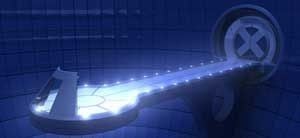

Jumping ahead 10 years; Tron: Legacy hit cinemas. The sequel to the 1982 cult film of the same name, a son searches for his father who is trapped in a self-evolving computer game. Since the initial movie, quantum computing and teleportation have become a reality, with scientists at the Kavil Institution of Nanoscience Delft having teleported quantum information stored in one diamond to another. Therefore, surely we can rely on Tron: Legacy to provide us with a catalyst for the next generation of doors?
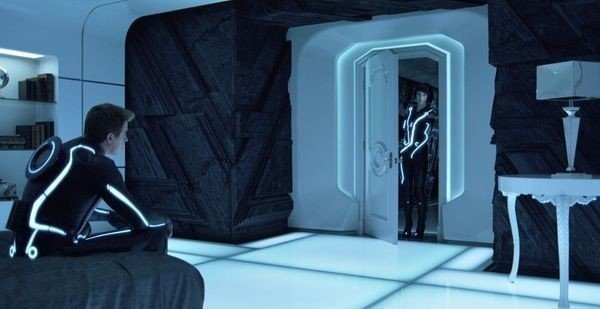
Wrong. What can be seen throughout the movie is what looks like white mock Georgian doors with (prepare yourself) a typical door handle that you operate with your actual hands. Having seemingly digressed from innovative design, perhaps this is an end of an era for the door? Could we be seeing an emergence of vintage trends? The world is saturated with retro references in fashion, cars and music, so it could be that many are harnessing the beautiful simplicity of the humble door once again?
Without being able to rely on sci-fi films and designers to provide something revolutionary in the world of entrances, we are left with little choice but to throw in the towel. But, putting on our optimistic hats (not made of tin foil) could we not just celebrate doors as they are? We take for granted what our external and interior doors do for us; keeping us safe and away from the elements. Perhaps we don’t need the revolutionary gusto of sci-fi blockbusters to ignite the design world. From pocket doors saving us space, and door furniture allowing us to give our entrances their own personality, perhaps it is time to stop yearning for more and see the value of what is in front of us. As one door shuts, another opens, and perhaps this time, it doesn’t need to be dilating.